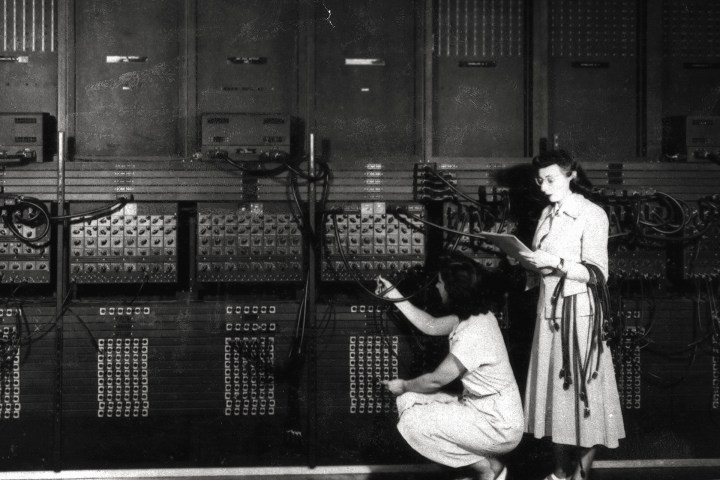Unsung Heroes: The Women Programmers of ENIAC

In the annals of computing history, the story of the ENIAC (Electronic Numerical Integrator and Computer) stands out as a monumental achievement. However, behind this groundbreaking machine were six women whose contributions remained unrecognized for decades. These women, known as the ENIAC programmers, played a pivotal role in shaping modern computing but were largely forgotten by history.
When the ENIAC was unveiled in 1946, it was heralded as the world’s first general-purpose electronic digital computer. This massive machine, which filled an entire room, was capable of performing complex calculations at unprecedented speeds. Yet, while the hardware engineers received much acclaim, the women who programmed the ENIAC were left out of the limelight. These women were responsible for programming the machine to execute ballistic trajectory calculations for the U.S. Army during World War II.
The ENIAC programmers were recruited from a pool of women who had previously been "computers"—individuals who manually performed mathematical calculations. With their strong mathematical backgrounds, these women were given the task of converting intricate mathematical formulas into a series of steps that the ENIAC could follow. Their work laid the foundation for modern programming languages and techniques, yet their names and contributions faded into obscurity until recent efforts to recognize their achievements.
The Pioneers Behind ENIAC
The six women who programmed the ENIAC were Kay McNulty, Betty Jennings, Betty Snyder, Marlyn Wescoff, Fran Bilas, and Ruth Lichterman. Each brought unique skills and perspectives to the project, contributing to its success in different ways. Kay McNulty had a talent for breaking down complex equations into manageable parts, while Betty Jennings and Betty Snyder excelled at debugging and optimizing code.
Despite their significant contributions, these women faced numerous challenges. They worked long hours under intense pressure, often without proper recognition or support. In a male-dominated field, they had to prove their worth continually. Nevertheless, they persevered, driven by their passion for mathematics and technology.
One notable example of their ingenuity was their development of a method to program nested loops on the ENIAC. This technique allowed for more efficient use of the machine's capabilities and paved the way for more advanced programming concepts in later years.
Challenges and Triumphs
The journey of the ENIAC programmers was fraught with obstacles. During World War II, resources were scarce, and they had to make do with what they had. They often worked with incomplete documentation and had to devise creative solutions to problems as they arose.
Furthermore, the programming process itself was arduous. Unlike modern computers with user-friendly interfaces and high-level programming languages, the ENIAC required manual configuration using switches and cables. The programmers had to meticulously plan each step of a calculation and physically rewire the machine to execute different tasks.
Despite these challenges, the ENIAC programmers achieved remarkable success. Their work demonstrated that women could excel in technical fields traditionally dominated by men. They proved that with determination and intelligence, it was possible to overcome societal barriers and make significant contributions to science and technology.
Recognition at Last
For many years, the contributions of the ENIAC programmers went unrecognized. It wasn’t until decades later that efforts began to bring their stories to light. In 1997, they were finally honored with induction into the Women in Technology International Hall of Fame.
This recognition was a long-overdue acknowledgment of their groundbreaking work. Documentaries such as "The Computers" have helped share their stories with a broader audience, ensuring that future generations understand their role in computing history.
Today, initiatives like The ENIAC Programmers Project continue to celebrate and preserve their legacy. By highlighting their achievements, we not only honor these pioneering women but also inspire young people—especially girls—to pursue careers in STEM (Science, Technology, Engineering, Mathematics) fields.
The Lasting Impact
The work of the ENIAC programmers has had a lasting impact on modern computing. Their innovative approaches to problem-solving and programming laid the groundwork for future developments in software engineering and computer science.
Many of the principles they developed are still in use today. For example, their methods for organizing code into logical sequences can be seen in contemporary programming languages like Python and JavaScript. Their emphasis on debugging and optimization remains critical in software development processes worldwide.
Their story is not just one of technological achievement but also of perseverance and breaking down barriers. By recognizing their contributions, we can better appreciate how far we've come in promoting diversity and inclusion in technology fields.
A Call to Action
The story of the ENIAC programmers serves as an inspiring reminder of what can be achieved when talent is recognized regardless of gender. It calls upon us to continue striving for equality in all fields and ensure that everyone has an opportunity to contribute their skills and knowledge.
By sharing their story widely, we can inspire new generations to pursue careers in technology and help create a more inclusive future where everyone's contributions are valued.
| Programmer | Key Contribution |
|---|---|
| Kay McNulty | Breaking down complex equations |
| Betty Jennings & Betty Snyder | Debugging and optimizing code |
| Marlyn Wescoff & Fran Bilas | Developing methods for nested loops |
| Ruth Lichterman | Pioneering manual configuration techniques |
Acknowledging Their Legacy
The recognition of the ENIAC programmers' work reminds us that history is often written by those who receive credit rather than those who deserve it most. By acknowledging these women's contributions today, we ensure that our understanding of technological progress includes all who played vital roles.
The legacy of Kay McNulty, Betty Jennings, Betty Snyder, Marlyn Wescoff, Fran Bilas, and Ruth Lichterman lives on through every line of code written today. They paved the way for countless others who have followed in their footsteps—women who continue to break barriers and shape our digital world.